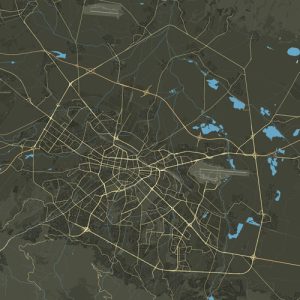Great discoveries are often the product of chance. This is completely true for the famous Thracian tomb in Kazanlak, included in the UNESCO World Heritage List. On April 19, 1944, soldiers digging a nest for an anti-aircraft gun in the northeastern part of the city came across a stone wall. They broke it, found themselves in a corridor, and then in a round vaulted room, and when they realized that they had come across something unusual, they called archaeologists. The scientists found in the mound mound ceramic and ritual vessels, parts of gold ornaments, an exquisite silver jug and hearths with traces of sacrifices. The small number of finds suggests that the tomb was apparently looted in ancient times, which in no way diminishes its extraordinary value. It owes its fame mainly to the excellently preserved unique wall paintings in the dome room and in the corridor. War scenes and horsemen with their characteristic clothing and weapons are depicted, but the main composition represents the so-called “funeral banquet”. The intertwined hands of the ruler and his wife embody the idea of inseparability, and the golden crown on his head suggests that he is a king, not simply a distinguished nobleman The monument was created when the Thracian state centered at Seutopolis, the capital of Seutus, was flourishing.
We will never know who exactly the depicted ruler is, but according to Professor Bozhidar Dimitrov, it can be established at least when and who created these masterpieces. “The conquests of Alexander the Great until 323 BC. – he wrote in his book “The 24 Wonders of Bulgaria” – created the so-called Hellenistic community from the territories of Hellas, Thrace, Anatolia, the Middle East. Greek art and technologies spread throughout this Hellenistic community, facilitated by the free movement of people , ideas, and goods in the vast Hellenistic kingdoms of the Diadochi /successors of Alexander the Great/ and their peripheral territories. A talented Greek artist or Thracian, who learned the “craft” in a Greek studio, painted these frescoes between 320-280 BC. Later than the latter date it is impossible for such an artist to have appeared, for Thrace was conquered by the Celts for six decades.Thus we must value the frescoes of the Kazanlak tomb – as a magnificent monument of Hellenistic painting, of which almost nothing remains even in today’s Greece.”
Work time:
Working hours:
winter time – 9:00-17:00 h.
summer time – 9:00-17:30 h.
Entrance fees:
Adults – BGN 6.00
Students (pupils and students) – BGN 2.00
Children up to 7 years – free
Free visit for unorganized tourists: Every last Monday of the month.
Contacts:
Phone: +359 431 63762

